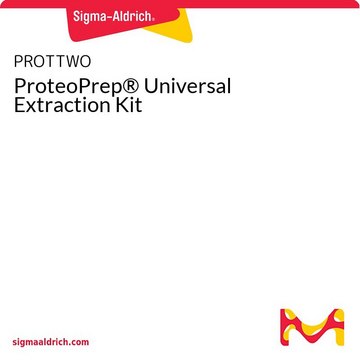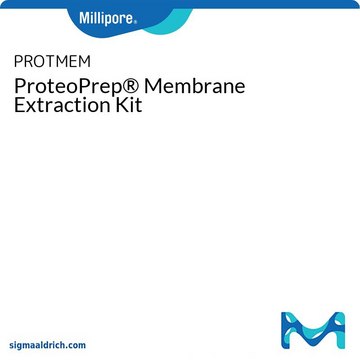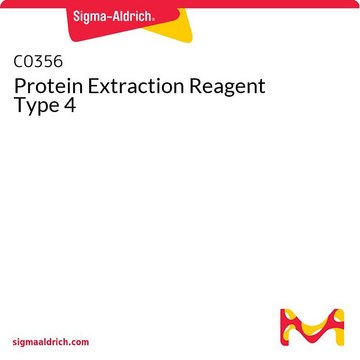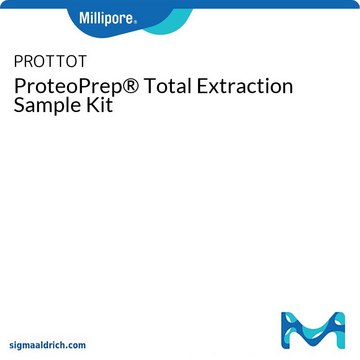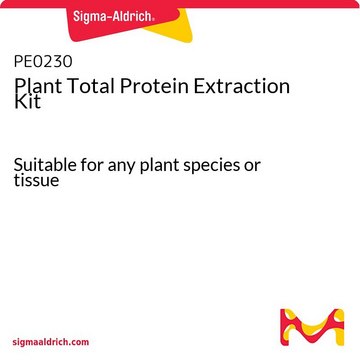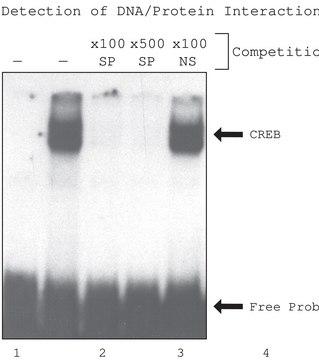Recommended Products
shelf life
≥1 yr (when stored at room temperature)
Application
The ProteoPrep Protein Precipitation Kit facilitates the concentration and purification of proteins. Once resuspended in a diluent of your choice, these proteins can be characterized through conventional protein assays, electrophoresis, mass spectrometry, or any number of applications.
Features and Benefits
- Ready-to-use reagents save you time and ensure consistency
- Room-temperature storage saves you precious cooler space
- A comprehensive technical bulletin provides an optimized protocol
Legal Information
ProteoPrep is a registered trademark of Merck KGaA, Darmstadt, Germany
Kit Components Only
Product No.
Description
- Trichloroacetic Acid 100 %
- Deoxycholate .002 %
- Wash Solution 25 %
Signal Word
Danger
Hazard Statements
Precautionary Statements
Hazard Classifications
Aquatic Acute 1 - Aquatic Chronic 1 - Eye Dam. 1 - Flam. Liq. 2 - Skin Corr. 1A - STOT SE 3
Target Organs
Central nervous system
Storage Class Code
3 - Flammable liquids
Regulatory Information
新产品
Choose from one of the most recent versions:
Certificates of Analysis (COA)
Lot/Batch Number
Don't see the Right Version?
If you require a particular version, you can look up a specific certificate by the Lot or Batch number.
Already Own This Product?
Find documentation for the products that you have recently purchased in the Document Library.
Bryan M Ham et al.
Analytical and bioanalytical chemistry, 387(3), 889-900 (2007-01-11)
A study of rabbit tear protein expression in a dry eye rabbit model was performed to determine if a pattern in expressed proteins could be identified. The uniqueness of the model allows the comparison of normal (control) eye tear protein
Kaori Iida et al.
BMC cell biology, 8, 38-38 (2007-08-31)
Deficiency of the PERK eIF2 alpha kinase in humans and mice results in postnatal exocrine pancreatic atrophy as well as severe growth and metabolic anomalies in other organs and tissues. To determine if the exocrine pancreatic atrophy is due to
Our team of scientists has experience in all areas of research including Life Science, Material Science, Chemical Synthesis, Chromatography, Analytical and many others.
Contact Technical Service